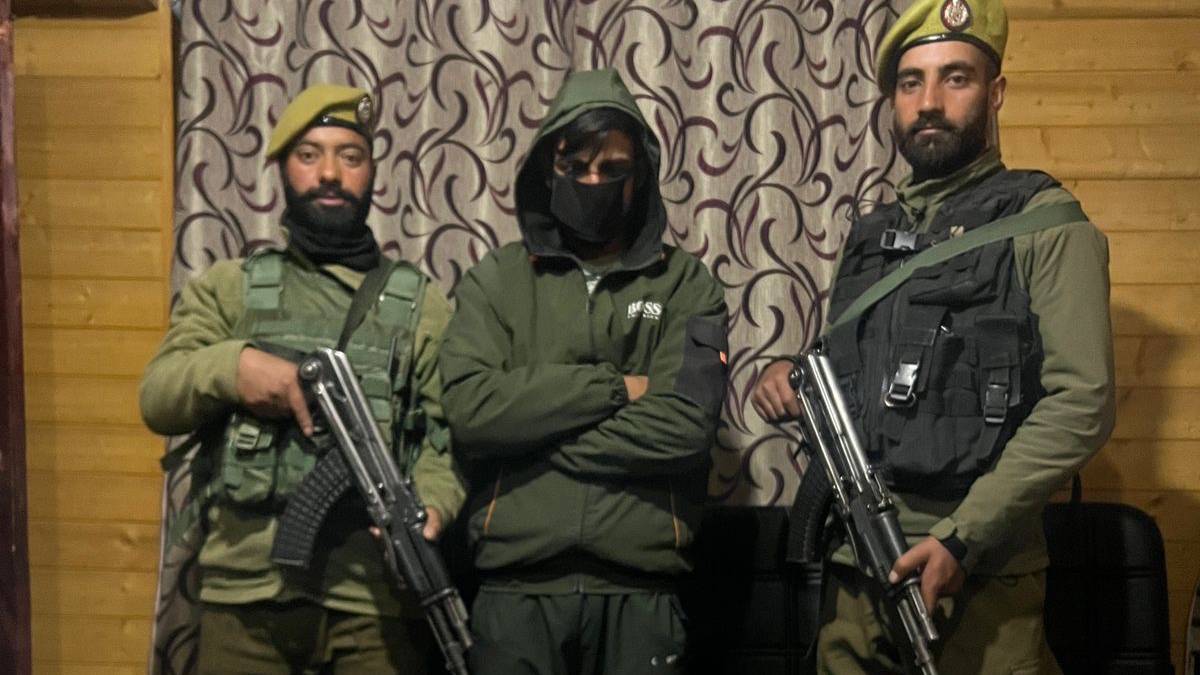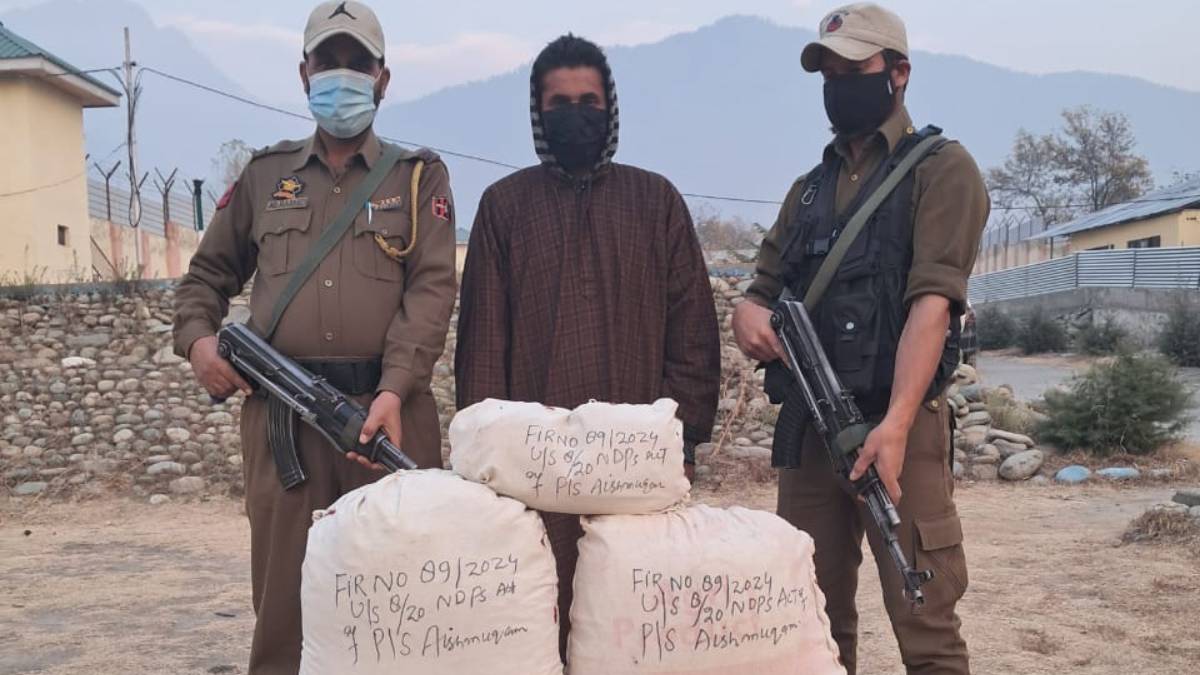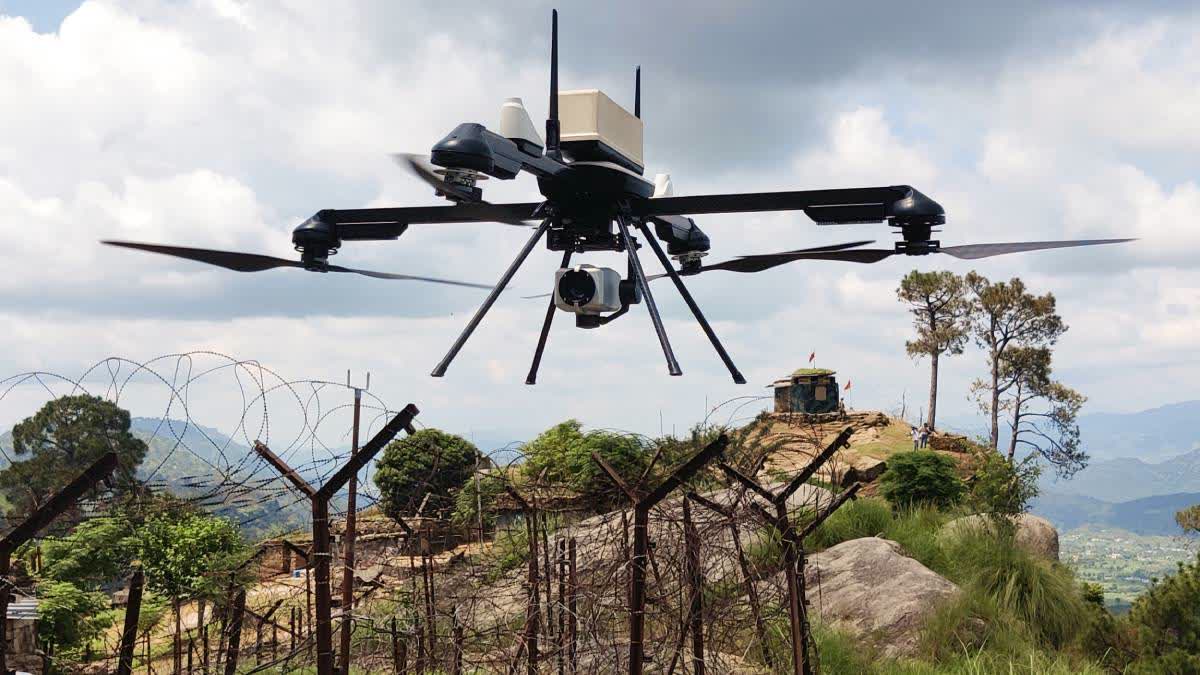Srinagar: The arrest of a youth with high-tech gadgets including drone and encrypted apps has blown the lid off the novel modus operandi espoused by drug peddlers, doubling the challenge for law enforcement agencies to curb the influx of illegal drugs in Kashmir.
The 2004-born, hailing from a business family in Srinagar and a student of Class 12, was caught red-handed with illegal medicinal opioids in large quantities and a high-quality drone, bringing an end to his long journey into the dark world of drug peddling. A senior police official, who had been tracking the drug peddler for some time after getting inputs about his activities, lacked evidence to nab him.
"We could not find how he was dispensing drugs to people. It was very challenging to catch him. But some time ago, we learnt his supplies dried up. During those days, we tirelessly made a breakthrough and got to know about the arrival of a drug consignment for him from Delhi," a senior official told ETV Bharat.
The consignment was booked through encrypted WhatsApp messages to evade the law enforcement agencies and the money was sent to the main supplier in Delhi via a fintech app to remove trails. In this process, what shocked the police was the confiscation of a high-end drone for the first time in the Valley where a drone was deployed to track the movement of police and to keep a close vigil on clients buying drugs from him. The drug peddler would deploy the drone on his premises for a view of the neighbourhood before supplying drugs. He would navigate clients through WhatsApp calls to a spot where the consignment would be kept under drone surveillance.
"He had two drones including a toy drone and a DJI drone with a good camera resolution costing above Rs one lakh to get the aerial view of the neighbourhood. The drone was seized alongside 140 bottles of codeine phosphate and a cash of Rs 38,530, perhaps proceeds of the narcotics," said the official adding that his two associates, hailing from Athwajan and Safa Kadal in Srinagar, were also caught by the Srinagar Police and booked under the Narcotic Drugs and Psychotropic Substances Act (NDPS).
Till now, drones were mainly deployed for smuggling of drugs and ammunition from Pakistan to India via Punjab or Jammu borders. Border Security forces reportedly seized 200 drones at the Punjab border mostly with drug consignments, a departure from previous practice of involving pipes placed across the border or items flung over the fence.

According to a survey by the J&K administration in 2019, some six lakh people—over 4.5 per cent of the total population of the Union territory (as per Census 2011)—are addicted to drugs. Of them, 90 per cent were found to be in the 17-33 age group. The substances consumed range from pharmaceutical opioids to heroin and brown sugar. With the consumption of opioids, J&K is estimated to be among the highest in the country.
But over the years, heroin has emerged as the 'drug of choice' with a survey by the department of Institute of Mental Health and Neuro Sciences (IMHANS) with 70 per cent of 67,468 drug addicts in the Valley’s 10 districts found to be addicted to heroin. The number is more likely to be higher but experts say almost 80-90 per cent of the population of drug addicts are in the 'harmful stage' and do not come forward due to social stigma. In August 2023, a parliamentary standing committee estimated that the union territory had around 1.35 million drug users. The survey also suggested that young males between the ages of 15 and 28 are more prone to drug use compared to elders. The survey showed a person addicted to opioids spent over Rs 88,000 a month on procurement.
Kashmir has been the preferred route for trafficking illicit narcotics from countries of the Golden Crescent comprising Afghanistan, Iran and Pakistan. In the past, Kashmir saw only 12 heroin addicts hailing from tourist hubs. But the contraband trafficked from Pakistan either through porous mountains stretching over the 700-kilometre LoC or international borders in Jammu and Kashmir sparked an 'epidemic'.
The heroin, according to a senior police officer, is travelling to Kashmir from Pakistan with the police describing it as part of fuelling militancy by funds received through its proceeds. A senior police officer who investigated the terror funding including drug cartels in Jammu and Kashmir explained that militant outfits focussed on India would smuggle drug consignments to the Valley through porous borders. The trend picked up after the hawala channels for sending money to outfits dried up with a major crackdown by the National Investigation Agency (NIA) in 2017.
"Part of the money received from consignment is shared with terror outfits in the Valley while the couriers or drug peddlers would keep their share as well," he said stressing a ‘zero tolerance policy’ against traffickers.
However, law enforcement agencies have adopted stringent preventive measures including attachment of properties to thwart the trade. This includes disrupting narco-terrorism links by booking drug peddlers under the NDPS Act or slapping them with the Public Safety Act. Until June this year, the J&K Police arrested 1,187 persons with 837 cases in the first six months of this year with seizures including 25 kg of heroin besides psychotropic substances.
Thirty-nine persons were arrested in 19 cases with attachment of movable and immovable properties including residential houses, lands and vehicles etc amounting to Rs 10.36 crores since 2023. Further, a total of 3,190 cases have been registered and 4,536 persons have been arrested in the crackdown against the illegal narcotic trade with NDPS Act invoked against the drug kingpins, resulting in 463 orders of detention in the last 18 months.
Dr Yasir Rather, a professor at the Institute of Mental Health and Neuro Sciences, which runs outpatient and in-patient rehabilitation centres for drug addicts, said these stringent measures against drug peddlers have plateaued the drug addiction graph. Tough steps by law enforcement agencies and coordination of stakeholders including administration, law enforcement agencies, doctors and the health departments have yielded results on the ground with the new admission of patients falling by almost 90 per cent.

"Now we get an average of 2-5 new patients a day," he said. This is a departure from the previous year's trend when out of 400 OPD patients, the department would receive eight fresh cases. "But now, heroin use has come down with lack of availability due to strict prevention measures and escalation of prices," he added.
From anecdotal evidence gathered from patients, Dr Rather said the price of a gram of heroin has risen to Rs 7,000 from Rs 3,000, reflecting a drop in supplies. But these stricter measures are putting the region at the edge of another crisis more dangerous than heroin addiction. Several experts cite the use of synthetic heroin, a form of adulterated one with an admixture of medicinal opioids, as more worrying for its harmful impact on users. The drug, according to Dr Rather, is entering Kashmir from places like Jammu, Punjab and Himachal Pradesh.
"It costs Rs 2,000 but unfortunately it is more dangerous than the original heroin. It triggers complications like skin ulceration, thrombosis and cardiac arrests. They get it through courier services from outside or the dark web and this trend has increased after the Covid-19 pandemic," he said.
"Like the young drug peddler from Srinagar who got his sealed consignment delivered home through courier service from Delhi without raising suspicion, we are seeking help from courier service providers as well. It is a new challenge but we will be able to neutralise this as well," a police official said citing some cases where alarm over suspicious consignment was sounded.
Also Read:



